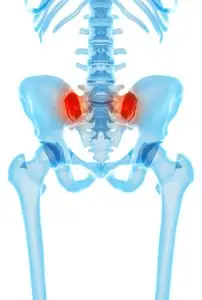
What Is Sacroiliac Joint Pain?
When osteoarthritis or another condition leads to inflammation in your sacroiliac joints, the chronic pain in your lower back can make it difficult to continue working. For people who suffer from severe sacroiliac joint pain, it may be impossible to work at all. If your lower back pain prevents you from earning a living, you may qualify for Social Security Disability for sacroiliac joint pain.
At Berger and Green, we know what the Social Security Administration (SSA) looks for in a well-qualified application for disability benefits. Our attorneys can review your claim to ensure you completed everything and gave satisfactory answers before you apply. If the SSA already denied your claim, we can file an appeal on your behalf and represent you throughout the appeals process. If you need help getting the disability benefits you deserve, call our Pittsburgh office today at 412-661-1400.
40+ years of experience from strong, knowledgeable, compassionate attorneys.
Start A Free EvaluationHow Do I Qualify for Disability Benefits for My Sacroiliac Joint Pain?
The SSA publishes a book of guidelines that can help you understand which medical conditions are eligible for disability benefits. Known as the Blue Book, this book contains the diagnostic criteria for dozens of qualifying medical conditions. Unfortunately, the Blue Book does not include criteria for sacroiliac joint dysfunction.
Instead, you may be able to qualify based on other related conditions you suffer from or based on the condition that causes your pain. One of the following sections in the Blue Book could apply to you:
- Section 1.02 – Major Dysfunction of a Joint;
- Section 1.04 – Disorders of the Spine; or
- Section 14.09 – Inflammatory Arthritis.
The Blue Book includes the specific criteria for when each condition becomes a disability, as well as the medical evidence you need to prove you suffer from this condition. In general, medical imaging—such as x-rays, MRIs, and CT scans—play a crucial role in proving joint inflammation and pain.
If you are considering filing a claim for disability benefits, you should discuss your condition with your doctor. They can help by explaining whether they believe you meet the criteria, and by ensuring your medical records include all of the proof necessary.
We know you’re hurting. We can help. Free case evaluations, home and hospital visits.
Contact Us Now For HelpCan I Still Qualify for Disability Benefits If I Do Not Meet an Impairment Listing?
In many cases, people with disabling sacroiliac joint pain do not meet the medical criteria in any of the impairment listings. If you do not meet a listing, you can still get benefits based on your residual functional capacity (RFC). Your RFC is a determination of your ability to work, including the type of work you can do and for how long. Your RFC evaluation can occur in three ways:
- A doctor can evaluate your abilities based on your medical records and other information;
- Your doctor can examine you and complete an RFC worksheet; or
- The SSA can ask a third-party physician to examine you and complete the worksheet.
If the SSA determines you cannot work at your previous job or at another job you qualify for, you may receive benefits.
You need an attorney with the experience and dedication to give your case the care it deserves.
Start A Free EvaluationAre There Other Requirements for Disability?
In addition to proving you suffer from a qualifying impairment, there are technical requirements you must meet to get disability benefits. Employees at the SSA field office will check to ensure you meet these qualifications before they forward your claim on for further review. The technical requirements differ for each of the SSA’s programs, Social Security Disability Insurance (SSDI) and Supplemental Security Income (SSI).
Requirements for the SSDI Program
SSDI helps workers who can no longer earn a living because of their disability. As such, the SSA requires you to have a certain number of work credits to get benefits. You earn these credits by working and paying into Social Security. The number of work credits you need depends on your age. SSDI also requires you to earn less than the monthly substantial gainful activity (SGA) limit if you currently work. This is one way the SSA determines if you are able to work or not.
Criteria to Draw Benefits from the SSI Program
SSI has no work history requirements. You may qualify even if you have never worked. However, this program has income and asset limits. It generally includes many types of income and exempts a few assets, such as your home, vehicle, and tools used for work.
If you are not sure whether you meet these requirements, our attorneys can help. We can review your work history and finances to determine if you qualify for SSI or SSDI benefits.
We can address all the legal hurdles that may be keeping you from getting a fair settlement.
Speak To An Attorney TodayWhat If the SSA Already Denied My Application?
If you received a denial letter in response to your application, do not panic. We can help you appeal this decision. You only have a short time to appeal, so act quickly. When you call us, we can take action as quickly as possible to request your appeals hearing.
We will look into your application and determine why the SSA denied your claim. Then, we try to build a solid case showing you meet all of the necessary qualifications. At the appeals hearing, we will present our evidence to an administrative law judge and ask them to overturn your denial. We can get most of our well-qualified clients approved during this step in the appeals process. If you win your appeal, you will receive back benefits and regular monthly payments.
Talk to Us About Getting Disability Benefits for Sacroiliac Joint Pain in Pittsburgh, PA.
The attorneys at Berger and Green work with you to fight for the disability benefits you deserve. We will navigate the appeals process for you if the SSA already denied your claim for benefits. Call us today at 412-661-1400 for a free consultation.









